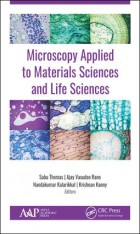abstract
The biological behavior of chromium has been the goal of a large body of intense research. Chromium has been designated as an essential trace element for more than 50 years with a crucial role on carbohydrate and lipid metabolism in both humans and animals. This chapter outlines from an historical perspective the evolution of the essential role of chromium, toward the current paradigm as toxic or pharmacologically active element. The essentiality versus the pharmacological relevance of chromium and its compounds is largely debated, and the irrefutable evidence of carcinogenic concerns of Cr(III)-tris-picolinate (CrPic) intake offered. Different scenarios for research in this area, including in vitro and in vivo studies, associated to epidemiological data, are here outlined for the understanding of the biological properties of chromium. This chapter is a contribution for the in vivo data knowledge on CrPic and presents a case study using mice as a model. Examples based on our laboratory experiments had been designed in order to characterize CrPic-damaging effects within distant organs, such as thymus and epididymis, through histopathological techniques.
authors
T.M. Santos, M. Ferreira, M. L. Pereira
our authors
Groups
1 - Inorganic Functional Nanomaterials and Organic-Inorganic Hybrids
5 - Biomedical and Biomimetic Materials




